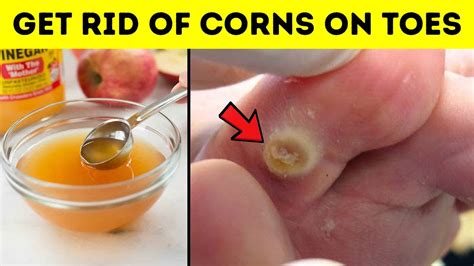How to Get Rid of Corns on Feet: A Comprehensive Guide
Corns. Those pesky, painful, hard bumps on your feet. They're a common problem, often caused by friction and pressure from ill-fitting shoes or activities that put extra stress on your feet. But don't despair! This guide will walk you through effective ways to get rid of those bothersome corns and prevent them from returning.
Understanding Corns: Types and Causes
Before we dive into treatments, let's understand what we're dealing with. There are two main types of corns:
-
Hard Corns: These appear as small, hard bumps, usually on the tops or sides of toes. They're caused by repeated pressure and friction, often from shoes that are too tight or pointy.
-
Soft Corns: These are softer, whitish corns that typically develop between the toes, in moist areas where skin rubs together. They thrive in damp environments.
Causes of Corns: Beyond ill-fitting shoes, contributing factors include:
- High Heels: The constant pressure on the toes is a major culprit.
- Tight Shoes: Any footwear that constricts your feet creates friction and pressure points.
- Bone Deformities: Conditions like bunions can increase the risk of corns.
- Improper Foot Mechanics: Abnormal gait or foot structure can contribute to pressure in specific areas.
Effective Home Remedies for Corn Removal
Many effective home remedies can help soften and remove corns:
1. Soaking and Exfoliation:
- Soak your feet: Soaking your feet in warm, soapy water for 10-15 minutes softens the corn, making it easier to remove dead skin.
- Gently exfoliate: Use a pumice stone or a foot file to carefully rub away the softened corn. Do not forcefully scrub, as this can cause further irritation and damage. Repeat this process daily until the corn is gone.
2. Salicylic Acid:
Many over-the-counter corn removal products contain salicylic acid. This medication helps to break down the dead skin cells that make up the corn. Follow the product instructions carefully. Overuse can irritate the surrounding skin.
3. Epsom Salt Soaks:
Dissolving Epsom salts in warm water creates a soothing soak that can help soften the corn and reduce inflammation. Soak for 15-20 minutes, then gently exfoliate.
4. Apple Cider Vinegar:
Some people find that applying apple cider vinegar diluted with water to the corn can help soften and remove it. Apply with a cotton ball and cover with a bandage.
5. Vitamin E Oil:
Vitamin E oil's moisturizing properties can help soften the corn. Apply it to the corn regularly and cover with a bandage.
When to See a Podiatrist
While home remedies are often effective, it's essential to see a podiatrist if:
- The corn is extremely painful or infected. Signs of infection include redness, swelling, pus, or increased pain.
- You have diabetes or poor circulation. These conditions increase the risk of complications from corn treatment.
- Home remedies haven't worked after several weeks.
- You have recurring corns. Your podiatrist can help identify and address underlying causes.
Preventing Corns: A Proactive Approach
Prevention is key! Here’s how to keep those corns away:
- Wear properly fitting shoes: Choose shoes that are comfortable, supportive, and have enough room for your toes. Avoid high heels and pointed-toe shoes as much as possible.
- Use cushioned insoles or padding: These can help reduce pressure and friction on your feet.
- Keep your feet dry: Moisture can exacerbate corn formation, especially soft corns.
- Wear socks that wick away moisture: This will keep your feet dry and comfortable.
- Regular foot care: Inspect your feet regularly for any signs of corns or other problems.
By following these tips and incorporating effective home remedies, you can successfully manage and prevent corns, keeping your feet healthy and happy. Remember, if you have concerns, always consult a podiatrist for professional advice and treatment.
